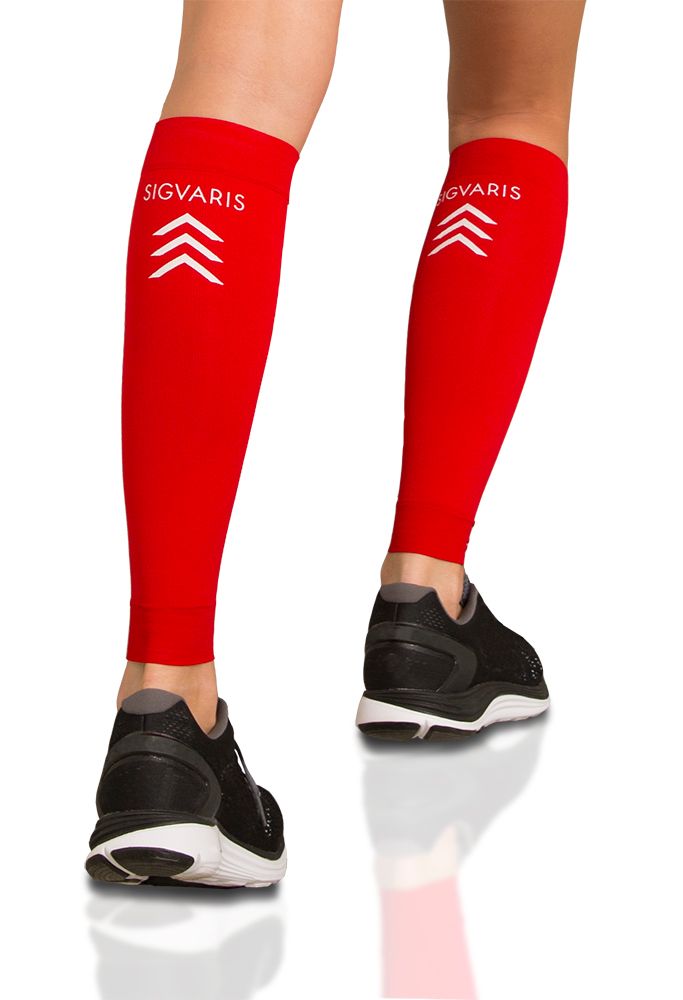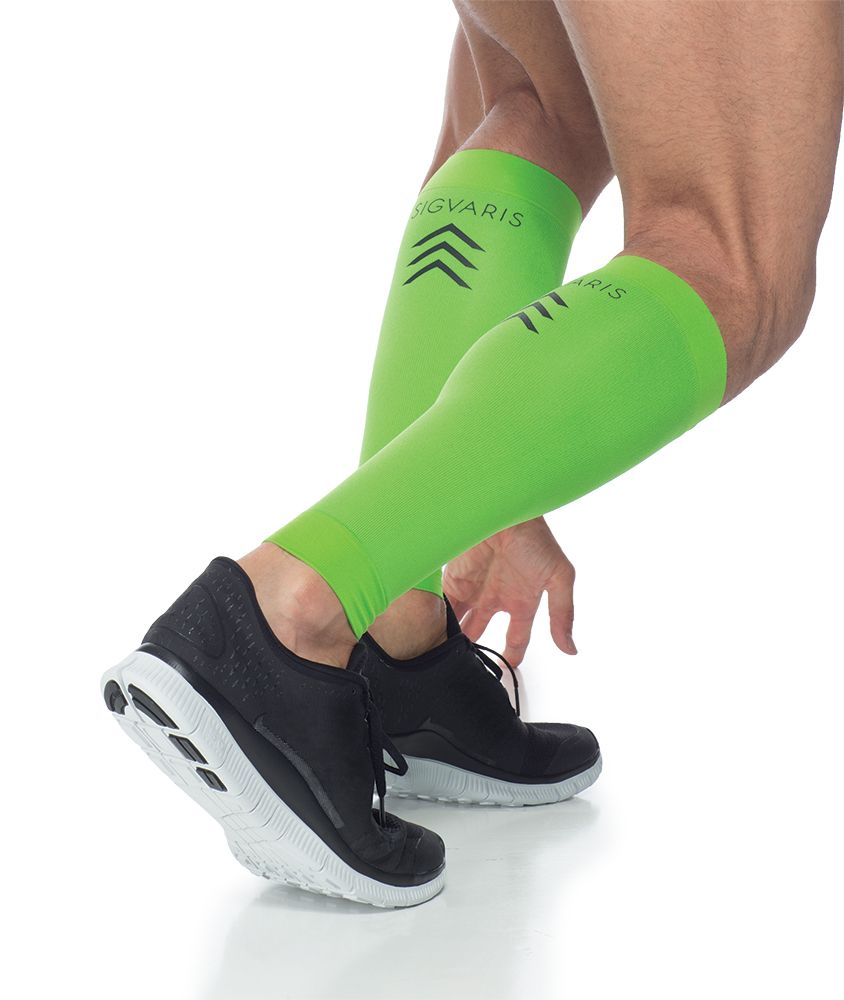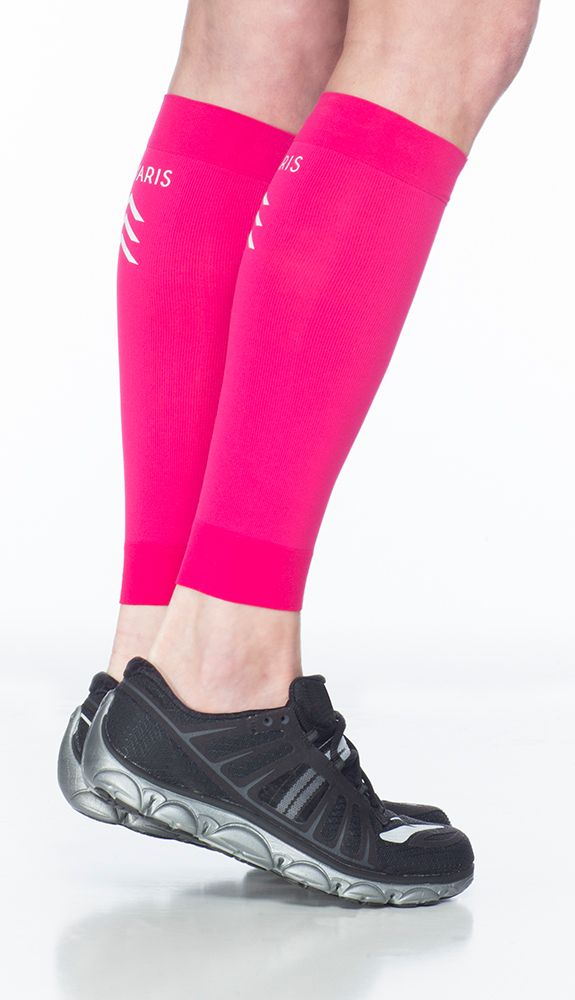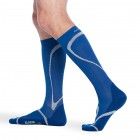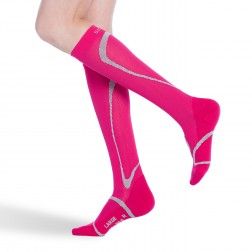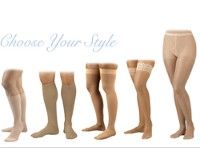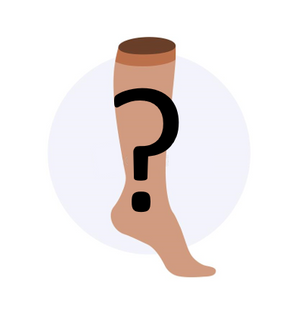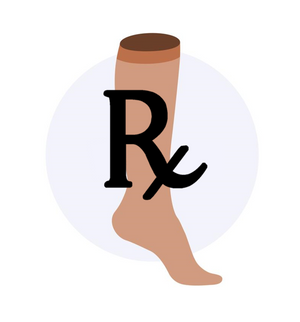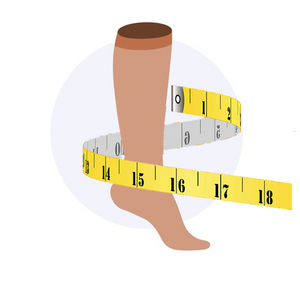Compression
Compression Stocking Overview
We offer a wide selection of Ready to Wear compression stockings including,
Jobst, Sigvaris, Activa, and Therafirm
Compression Stockings, Compression Socks, Support Stockings, Support Hosiery —
What ls the Difference?
There are many different terms for compression stockings, but for the most part, they all mean the same thing: Compression Stockings.
Graduated compression: Also referred to as gradient compression, this term describes the changing level of compression provided to the leg by one set of compression socks or stockings. By design, compression garments provide higher levels of compression at the ankle of the garment and less compression as you move up the leg to encourage blood flow from the bottom of the body back up toward the heart.
mmHg: This stands for millimeters of mercury (Hg) and designates the amount of pressure exerted on the body by a pair of compression stockings.
Compression Stocking Things to Know
Is Compression right for me?
Who can benefit from wearing compression stockings?
Anyone's legs can feel better while wearing gradient compression stockings, especially if you spend a lot of time sitting, standing or in a sedentary position. Gradient compression stockings are most beneficial for the following leg complaints:
Tired, aching, heavy feeling legs Leg swelling - Varicose veins
Venous insufficiency - Post-thrombotic syndrome - Healed venous ulcers
Active venous ulcers - Lymphedema
We recommend that you consult with your doctor before wearing compression stockings 20 mmHg and above. If you have arterial circulation problems, please consult with your physician before wearing any level of compression.
Is there a reason why I should not wear compression stockings?
Contraindications (medical conditions in which compression is not recommended):
Ischemia (advanced arterial disease) of the legs
Uncontrolled congestive heart failure o Untreated septic phlebitis of the leg
Compression stockings should be worn with caution with:
Skin infections - Weeping dermatosis - Allergic to garment fabric
morePrescripton and Insuance?
Do I need a prescription?
Ready to wear and standard off the shelf compression garments do not require a prescription.
However, some insurance plans require a doctor's prescription. Check with your insurance plan to see if they cover compression stockings and their documentation requirements.
Will my insurance or Medicare cover compression stockings?
Compression stockings are a non-covered service under Medicare Part B as well as Medicare supplement plans. Medicare will not pay for these items even with a prescription from your doctor.
Some insurance plans will cover the cost of compression hosiery if the stockings are prescribed by a physician and the compression is greater than 20 mmHg. Please contact your insurance carrier to determine if stockings are a covered benefit.
We are unable to accept insurance for compression at Aston Pharmacy Home Health Center. To make this process easier all of our products are competitively priced and compression fittings are free of charge!
moreBeing Fitted for Compression
You must be measured and fitted for compression stockings! The appropriate time to measure is first thing in the morning if you have any kind of swelling. Aston Pharmacy Home Health Center opens at 9am and we will do fittings until 11am.
We do NOT recommend being fitted for compression later than 11am!
All compression garments are NOT returnable or exchangeable!
Swelling in your legs starts as soon as you get out of bed. If you are an early riser we recommend trying to stay off your feet as much as possible before coming in to be fitted. If you come in to be fitted and have significant swelling, we will not be able to get an accurate measurement to fit you into the correct size compression stocking. If the compression stocking is too large it will not decrease your swelling.
more
